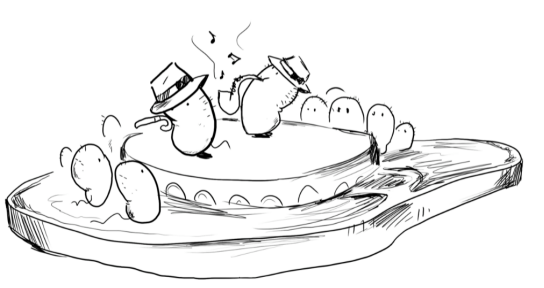By Jesse Wertman (Contributor) – Email
Print Edition: October 17, 2012
In lieu of the recent XL Meats E. coli outbreak, concerns about meat quality and illness prevention are understandable. As a student eating in the cafeteria or buying your own meat to cook, the E. coli concerns become even more relevant. Prevention is the key and to do this you must know your enemy and defeat it. After all, according to Abraham Lincoln, “Do I not destroy my enemies when I make them my friends?”
Escherichia Coli, or E. coli, is often associated with bad meat and product recalls, along with the unpleasant effects of food poisoning. “The truth is that E. coli is a common bacteria of the intestines,” said registered nurse and UFV graduate Celeste Noble. The bacterium is rarely ever pathogenic, but when the occasional pathogenic strain appears, it will cause a panic as seen in the XL incident.
“Fecal-oral transmission,” is how E. coli spreads, Noble explained. That means feces are where you’d find E. coli living outside the body for a brief period of time. “Transmitted by eating fecal matter means that E. coli isn’t restricted to meat,” Noble said, noting several transmission routes, including “unhygienic food prep, crop contamination from manure or irrigation of fields with grey water, or directly drinking grey water.”
Knowing the transmission routes of any virus/bacteria makes the ability to prevent infection easier. Hand washing after bathroom use is essential, especially when handling food. Vegetables can carry these bacteria, Noble mentioned, making it important to wash your vegetables and rid them of any trace of the E. coli pathogen. Becoming vegetarian won’t prevent E. coli. “Just don’t eat poop,” Noble joked.
There still is a trust issue with meats though. “Properly cooking” beef and other meats is a popular debate. Cooking meat thoroughly will kill the pathogen, but many people enjoy a juicy raw steak. Wes Wertman, my father and a local hobby farmer, is confident the cows on his farm are safe. “My beef could be eaten raw,” he said. This is because he grows and slaughters the cow himself. “I’ve seen what happens to the meat from birth,” he said. Going to the local butcher is much the same. But we can’t all eat local as it is more expensive and even trusting restaurants is difficult. Denny’s (and others) has a cautionary disclaimer on their menus that reads: “Note: Consuming raw or undercooked meats … may increase your risk of food-borne illness.” Although just a disclaimer it still adds weight to the “raw meat is bad” argument. “If E. coli is transferred through feces, why would raw meat be dangerous?” questioned Noble.
That is an important question for all consumers. Where our food—both meat and veggies—comes from should always be considered. All cuts of meat have an internal temperature recommendation, but this is often to maximize tenderness, not consumer safety. Start questioning if you want to buy ground beef with a sticker that says “For your safety cook at 160 degrees F.” Wash your hands, cook your meat and don’t eat poop and hopefully you can avoid the bloody diarrhea that comes with E. coli poisoning.



